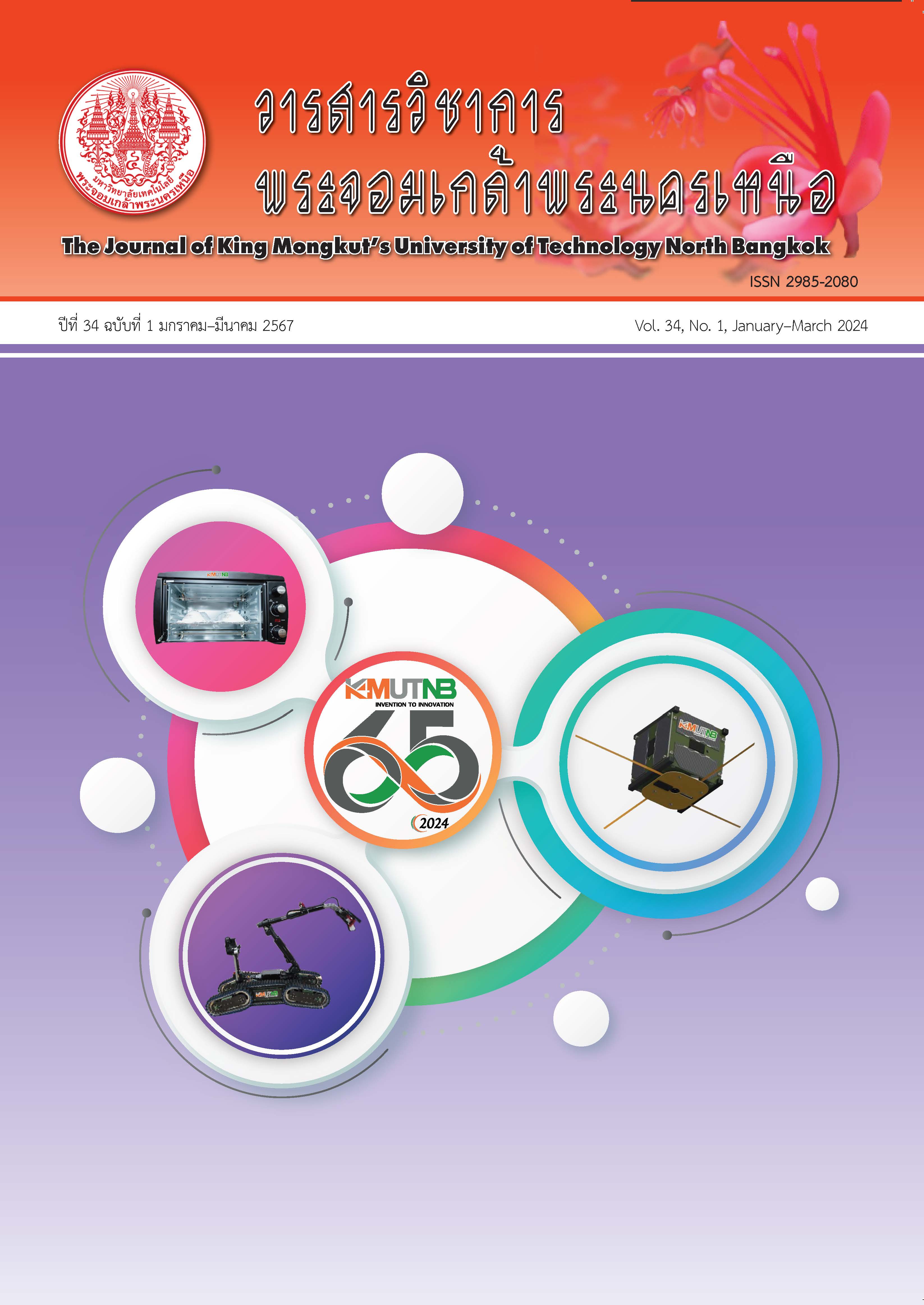การศึกษาเปรียบเทียบคุณสมบัติทางไฟฟ้ากระแสสลับของลูกถ้วยพอร์ซเลนกับอนุภาคฝุ่นซีเมนต์และเกาลีนที่เคลือบผิว
Main Article Content
บทคัดย่อ
ในช่วงเวลาหลายปีที่ผ่านมาจนถึงปัจจุบันหลายพื้นที่ในประเทศไทยได้รับผลกระทบจากปริมาณฝุ่นที่มากขึ้น ปริมาณฝุ่นในอากาศที่เพิ่มขึ้นรวมถึงความรุนแรงของสภาพอากาศที่มีอนุภาคแขวนลอยปะปนอยู่เป็นหนึ่งสาเหตุที่ทำให้ฉนวนลูกถ้วยไฟฟ้ามีการนำไฟฟ้าที่สูงขึ้น บทความวิจัยนี้ได้นำเสนอการเปรียบเทียบคุณลักษณะของลูกถ้วยไฟฟ้าที่ถูกเคลือบผิวโดยซีเมนต์และเกาลีน ซึ่งตัวอย่างซีเมนต์ที่นำมาทดสอบกับลูกถ้วยนั้นได้มาจากเขตอุตสาหกรรมผลิตปูนซีเมนต์ จังหวัดสระบุรี ในประเทศไทย จากนั้นได้ทำการทดสอบการเปอะเปื้อนบนผิวโดยใช้ลูกถ้วยพอร์ซเลนเบอร์ 52-1 จากการทดสอบพบว่า แรงดันวาบไฟของฉนวนลูกถ้วยที่อนุภาคฝุ่นซีเมนต์เกาะบนผิวนั้นสูงกว่ากรณีของเกาลีน ในขณะที่กระแสรั่วไหลบนผิวฉนวนลูกถ้วยที่อนุภาคซีเมนต์เกาะบนผิวนั้นมีค่าต่ำกว่ากรณีของเกาลีน ส่วนการเปรียบเทียบหยดน้ำที่ปกคลุมบนผิวลูกถ้วยโดยใช้วิธีการตามมาตรฐานโดยการสเปร์น้ำสามารถบ่งชี้ได้ว่าลูกถ้วยฉนวนที่ผิวปกคลุมด้วยเกาลีนนั้นมีคุณสมบัติของน้ำที่เกาะบนผิวที่ดีกว่ากรณีของซีเมนต์เนื่องจากเกาลีนนั้นสามารถละลายน้ำได้ดีและมีขนาดอนุภาคที่เล็กกว่าซีเมนต์
Article Details

อนุญาตภายใต้เงื่อนไข Creative Commons Attribution-NonCommercial-NoDerivatives 4.0 International License.
บทความที่ลงตีพิมพ์เป็นข้อคิดเห็นของผู้เขียนเท่านั้น
ผู้เขียนจะต้องเป็นผู้รับผิดชอบต่อผลทางกฎหมายใดๆ ที่อาจเกิดขึ้นจากบทความนั้น
เอกสารอ้างอิง
X. Jiang, Y. Guo, Z. Meng, Z. Li, and Z. Jiang, “Addition salt deposit density of polluted insulators in salt fog,” IET Generation, Transmission & Distribution, vol. 10, no. 15, pp. 3691–3697, 2016.
Z. Jiang, X. Jiang, Y. Guo, Y. Hu, and Z. Meng, “Pollution accumulation characteristics of insulators under natural rainfall,” The Institution of Engineering and Technology Journals, vol. 11, pp. 1479–1485, 2017.
S. Pimonsree, P. Wongwises, and R. Pan-Aram, “PM10 dispersion during air pollution episode in Saraburi, Thailand,” KKU Research Journal, vol. 13, no. 10, pp. 1185–1190, 2008.
Thailand's air quality and situation reports. (2020). Pollution Control Department. Ministry of Natural Resources and Environment. Thailand [Online] (in Thai). Available: http://air4thai.pcd.go.th/webV2/
Standard for suspension-type porcelain insulator, TIS 354, 1985.
Selection and dimensioning of high-voltage insulators intended for use in polluted conditions - Part 1: Definitions, information and general principles, IEC 60815-1, 2008.
Selection and dimensioning of high-voltage insulators intended for use in polluted conditions - Part 1: Ceramic and glass insulator for a.c. systems, IEC 60815-2, 2008.
Artificial pollution tests on high-voltage ceramic and glass insulators to be used on a.c. systems, IEC 60507, 2013.
T. Fischer. (2009). Materials Science for Engineering Students. Elsevier Inc. USA. [Online]. Available: https://booksite.elsevier. com/samplechapters/9780123735874/ Sample_Chapters/01~Front_Matter.pdf
W. F. Smith and J. Hashemi, Foundations of Materials Science and Engineering, 5th ed., Singapore; McGraw-Hill, 2011.
Guidance on the measurement of hydrophobicity of insulator surfaces, IEC 62073, 2003.
M. Amin, M. Akbar, and S. Amin, “Hydrophobicity of silicone rubber used for outdoor insulation (An Overview),” Review on Advanced Materials Science, vol. 16, pp. 10–26, 2007.

